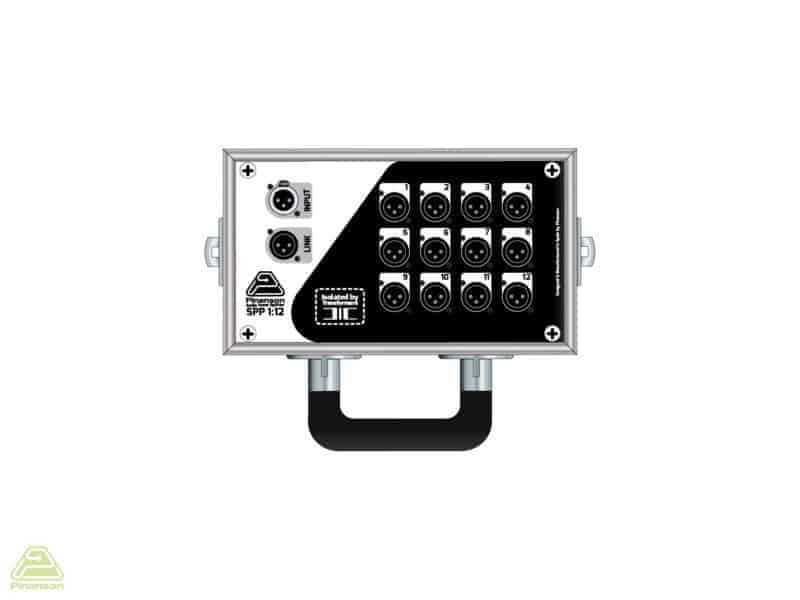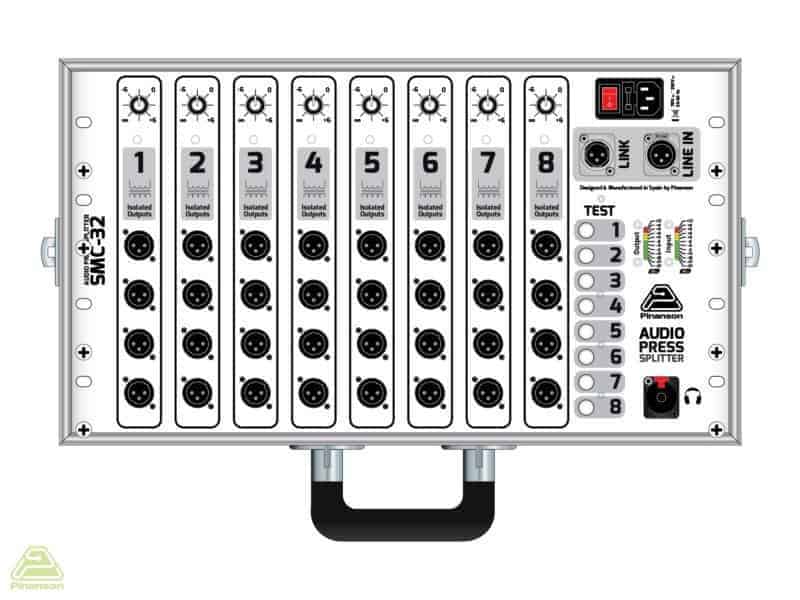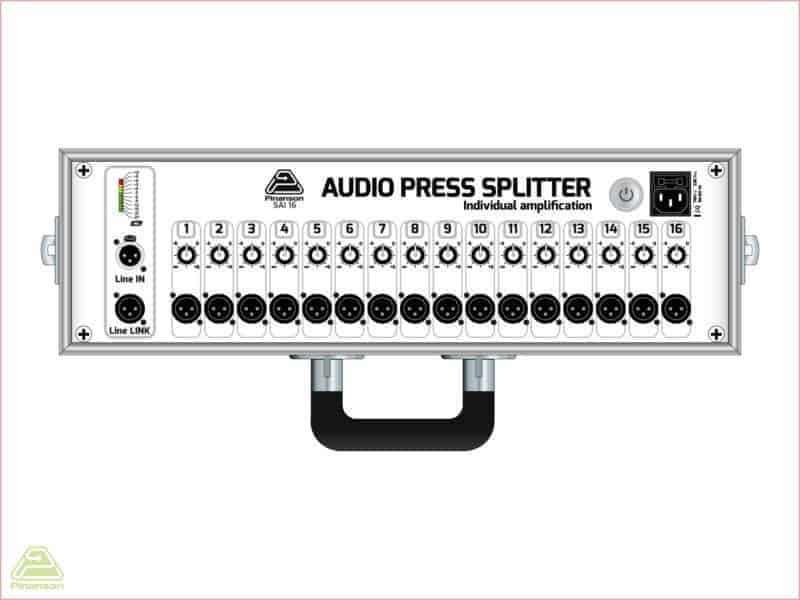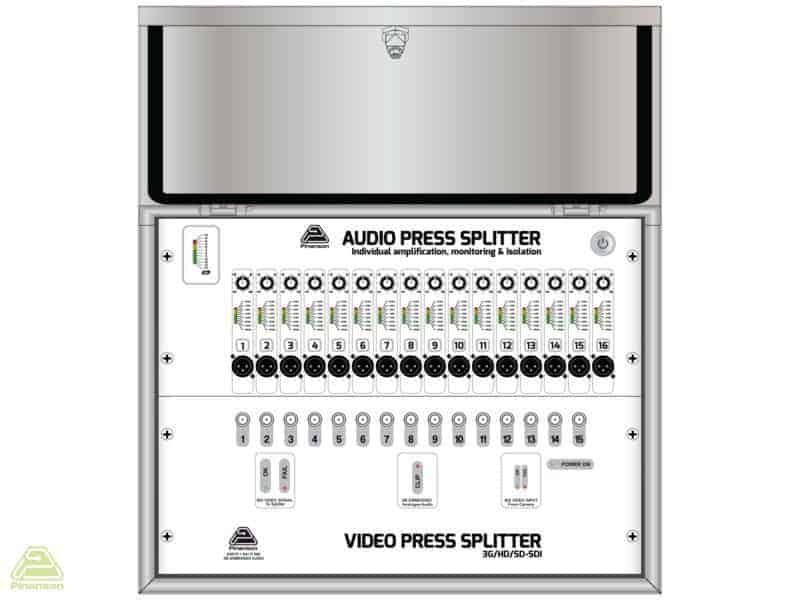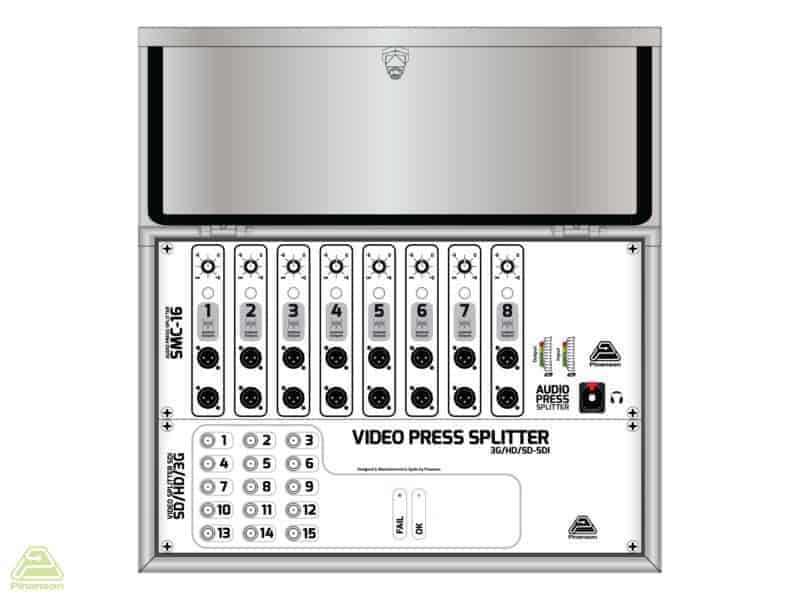Press Splitters…
What for?

When the audio source is unique but the possible receivers and users of it are multiple, it is necessary to distribute that signal in such a way that the quality of the audio signal is not affected. If we also want to avoid possible noise problems and isolate multiple signals, the solution is to use a Press Splitter.
In this way we avoid the typical image of the football player surrounded by microphones and cables to a simplified image with a single microphone.
Where?
In a press room, one or more speakers must be transmitted to multiple media. Typically, the signal from these microphones is routed to a console or processor for processing and delivered for distribution to the media.
The role of the Splitter starts here:
This signal preamplified and treated by the console at line level will be connected to the input of a Press Splitter, which, depending on the outputs it has, will be able to supply that identical and even amplified audio signal (if the Splitter is active ) from 8 to 32 users.

Noise suppression? Interference protection?
Audio Splitters (if required) work with transformers. Transformers perform signal distribution across multiple outputs identically. Transformers transfer voltage between windings without electrical contact between them. In this way an isolation of the noise between windings is created. So if our Splitter receives a signal contaminated with noise from the environment, our output would be a clean output isolated from that noise.
The so-called CMRR: Common Mode Rejection Ratio, indicates the ability of a device to reject signals induced in common mode. High-quality transformers offer high CMRRs of up to 118 dB.
Working with professional audio transformers we have protection by magnetic screens made of a high permeability material so that the magnetic field will flow through the protection and not through the transformer core. In this way, possible magnetic interference from the environment (such as those produced by a TV monitor, power transformers, etc.) will be rejected.
Active or Passive?
A Passive Splitter works by means of a transformer so that the signal is distributed to each user with the same level (line level) with which it has arrived from the console. It is a device that does not need to be connected to the electrical network to work, so it is very useful for outdoors, for example. Being a passive device there is a small insertion loss.
An Active Splitter has a transformer and amplification or only amplification. In other words, the main characteristic is that the amplification stage will give you the option of modifying the gain by amplifying or attenuating the signal coming from the console. In addition to this feature, it can be equipped with visual monitoring, for example.
In both options, the audio input is balanced by a transformer that gives them a CMRR of more than 100 dB.
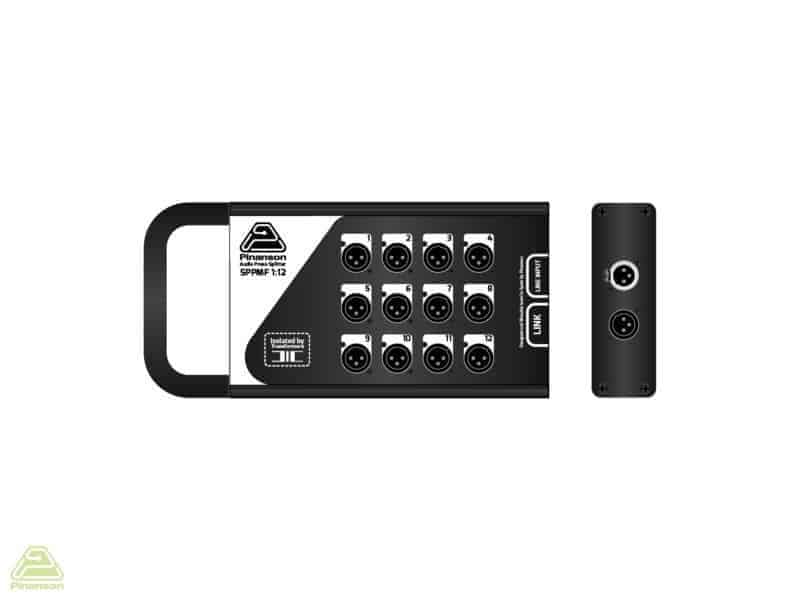
SPP 12 Passive Splitter MF format
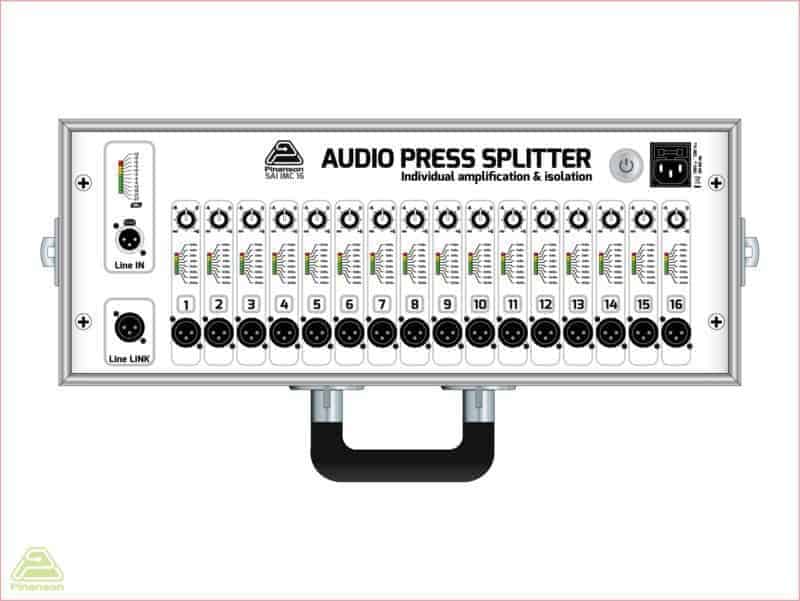
SMC 16 active Press Splitter Brief case format.
Wide variety of Press Splitters
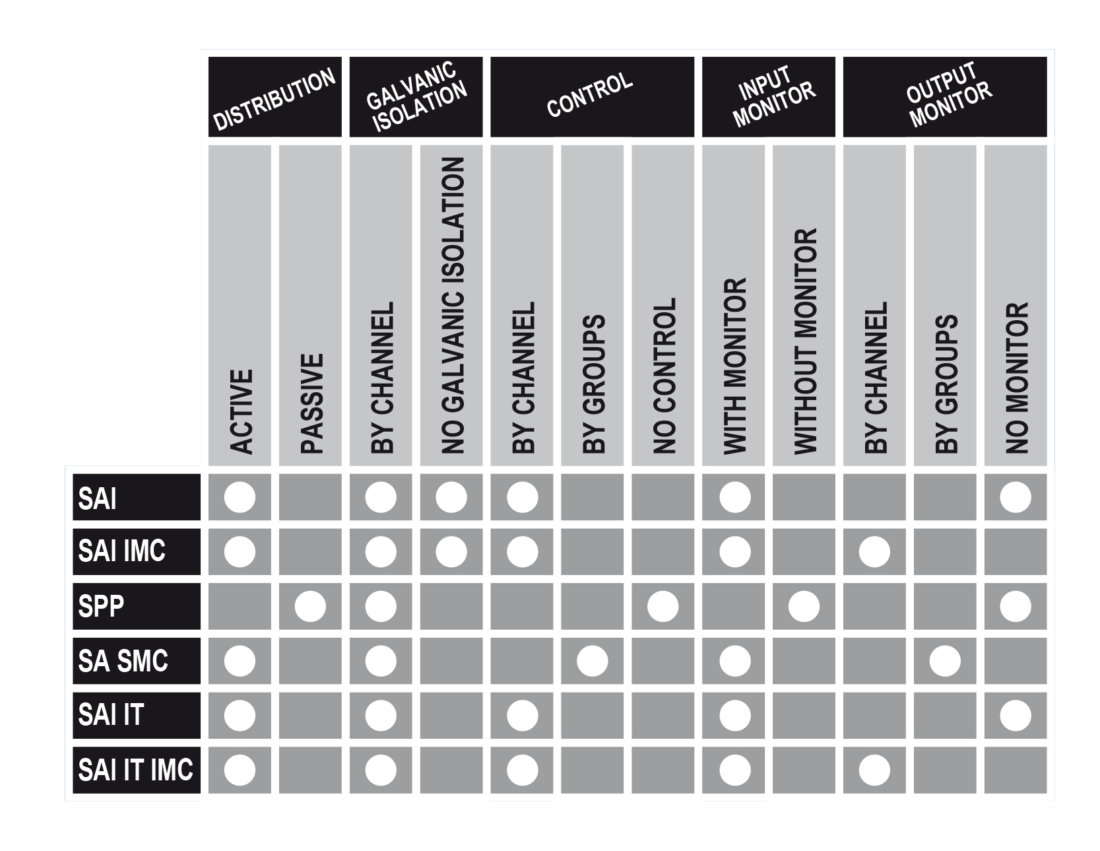
Within the range of Active Press Splitters we can choose:
- Number of outputs: 8, 12, 16, 24 or 32 outputs
- Format: portable, Rack mounted 19″ box, or to install in a wall, floor or table box
- Monitoring: LEDs visual, either for each output or only input.
- Gain: per each output or per group outputs
- Isolation: all our splitters have a transformer at the input, you can choose to have it also for each output.
- Dante / analog signal: we can have the option of having two input signals and select the one we want to work with: analog signal and digital signal from Dante network.
There are rooms where digital video signal distribution is also necessary. Within our range we have the possibility to choose press splitters with:
- Hybrid Signal, Audio and Video 3G-SDI: analog audio and digital video signals are distributed to the press in the same equipment.
- 3G-SDI video signal and de-embedded audio: a single 3G-SDI video signal reaches the equipment and it is responsible for distributing the video signal, de-embedding the audio from the digital frame, converting it to analog and distributing it to the press as an analog line-level audio.
Still have doubts about needing a Press Splitter?
Send us an email and tell us what you need: pinanson@pinanson.eu


